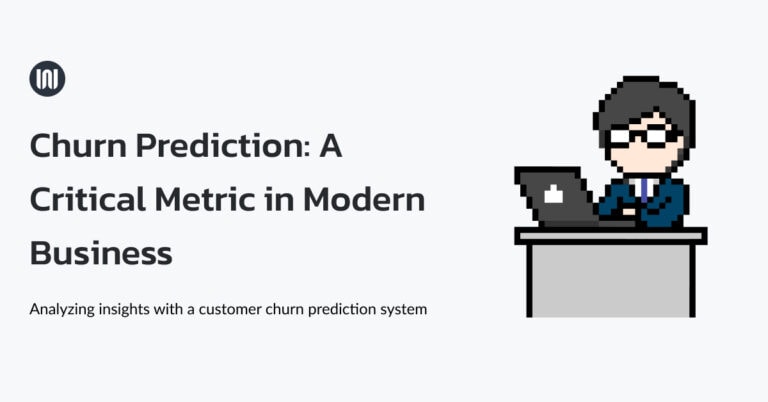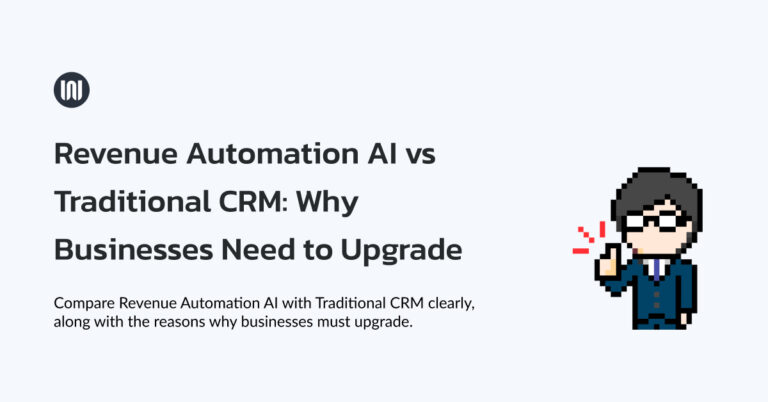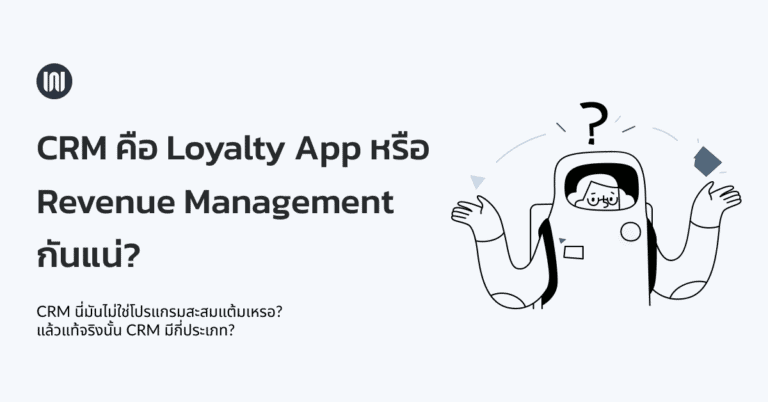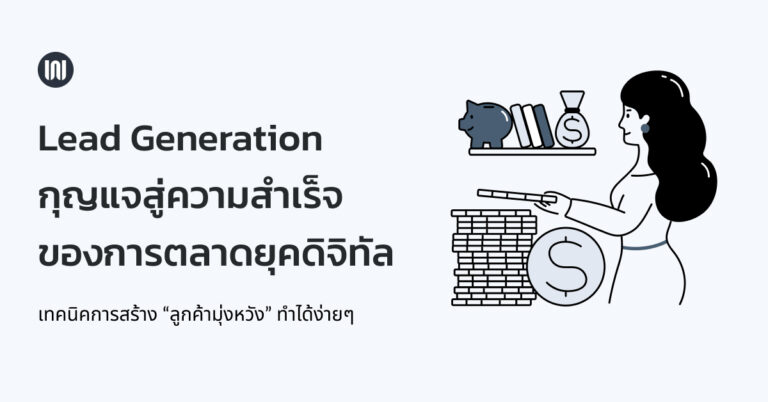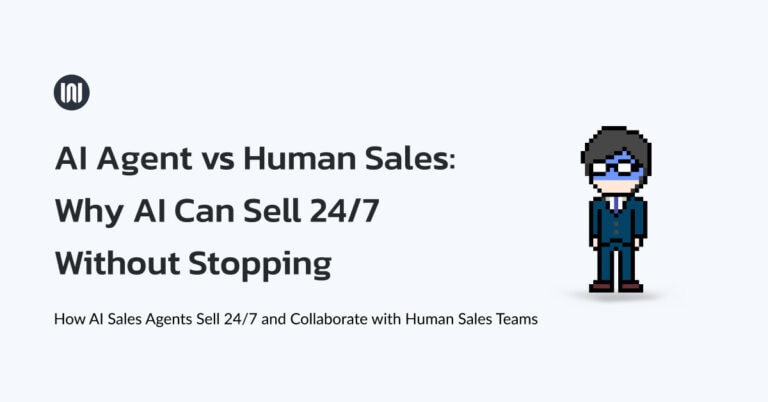AI Sales Automation: The Future of Selling Every Business Should Know

Riki Kimura
Digital Marketing Executive at Wisible
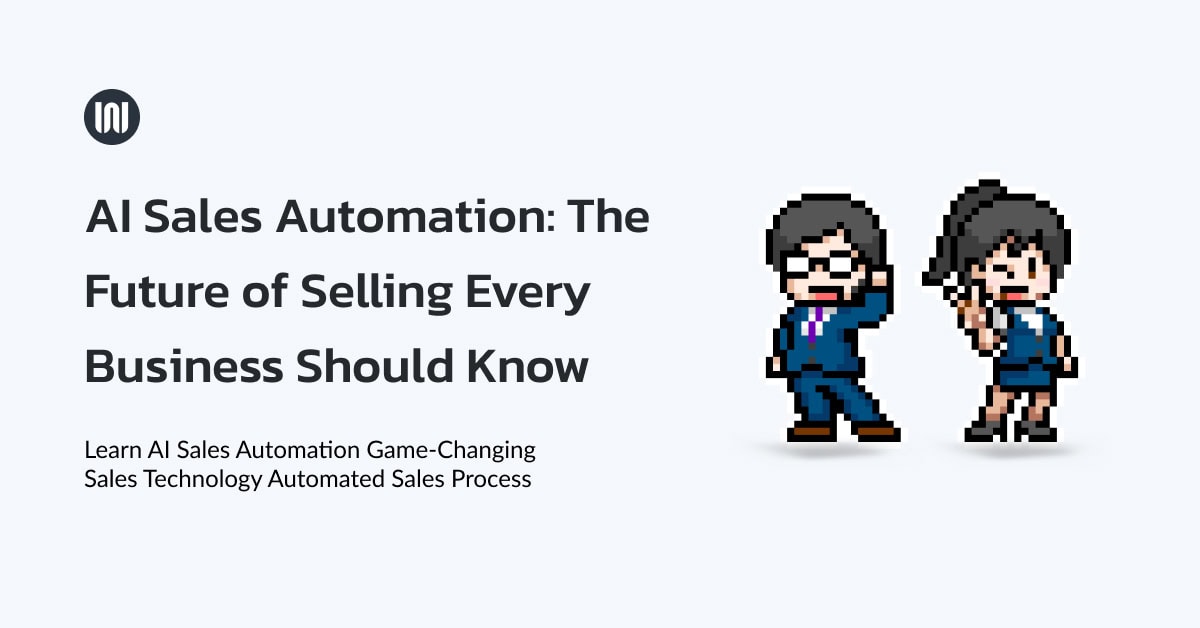
“AI automation will inevitably transform the sales profession.”
That’s what I wrote years ago—and today, it’s finally becoming a reality. With AI sales automation, salespeople can now focus more on what they do best: selling.
With over 20 years of experience working with B2B businesses, I’ve witnessed the shift from traditional, Excel-based, intuition-driven sales to an automated sales process powered by AI—enabling sales teams to close more deals, faster.
But what exactly is AI sales automation? Why is it the future of sales for businesses? And how can you get started?
What is AI Sales Automation? Understanding the Game-Changing Tech
AI sales automation คือ การใช้ปัญญาประดิษฐ์ (Artificial Intelligence) ร่วมกับระบบอัตโนมัติเพื่อAI sales automation refers to the use of artificial intelligence combined with automation tools to perform repetitive, time-consuming, or precision-critical sales tasks—freeing sales teams to focus on high-value activities.
After analyzing the workflows of hundreds of salespeople through our work at Wisible, I found that sales reps spend 60–70% of their time on admin tasks, such as:
- Entering customer data into CRM
- Sending follow-up emails
- Creating quotations
- Updating deal statuses
- Preparing sales reports
AI Sales Automation solves this by either fully handling or significantly simplifying these tasks.
Traditional CRM vs. AI Sales Automation
Traditional CRM:
- Acts as a record-keeping tool
- Requires manual data input
- Static reports
- No recommendations for next actions
AI Sales Automation:
- Acts as an intelligent assistant
- Automatically collects data from multiple sources
- Predictive, real-time reporting
- Recommends next best actions
Why Automated Sales Processes Matter for South East Asia Businesses
Challenges of Traditional Selling in South East Asia
From our survey of 500+ companies, we found common issues in traditional sales:
1. Lead Leakage
- 30–40% of leads are never followed up
- Sales reps forget to follow up on time
- Customer data is scattered across systems
2. Inconsistent Sales Processes
- Each rep sells differently
- No standard for customer follow-up
- Hand-offs between teams are messy
3. Slow Data Analysis
- Reports take too long and are outdated
- Strategies can’t be adjusted in time
- Decisions rely more on gut feelings than data
Proven Benefits of AI Sales Automation in South East Asia
From Wisible customer results:
1. 40–60% Sales Productivity Boost
- Admin time reduced from 70% to 30%
- Customer-facing time increased from 30% to 70%
- Deal closing speed improved by 25–35%
2. 80% Fewer Missed Opportunities
- Automated reminders for follow-ups
- No more lost customers
- Smooth team handovers
3. 85% Forecast Accuracy
- Real-time reporting
- More accurate sales predictions
- Better resource planning
According to McKinsey & Company, companies using AI in sales can increase revenue by 10–15% and cut sales costs by 10–20%.
Game-Changing AI Sales Tools in South East Asia
1. Automated Lead Scoring & Qualification
The Problem: Sales reps don’t know which leads to prioritize and waste time on low-quality prospects.
The AI Solution: Machine learning analyzes behavior and scores leads automatically.
Example:
- Customer A: Visits website 5 times, views pricing 3 times, downloads brochure = Score 85%
- Customer B: Visits once, reads 1 blog = Score 25%
- Recommendation: Contact Customer A first
Real Result: One Wisible client increased their close rate from 15% to 35% in 6 months.
2. Automated Lead Distribution & Assignment
“Lead allocation can be manual or automated,” as I shared at MarTech Expo 2024.
- Sequential Distribution: Leads go in order: Sales 1 → 2 → 3 → and so on.
- Skill-Based: Assigned based on product interest or expertise
- Geographic: Ex. Bangkok → Central team; Chiang Mai → North team
3. AI-Powered Email Automation
Smart Email Sequences: Auto-send emails based on customer behavior
Example:
- Day 1: Product download → Thank you email
- Day 3: No reply → Use case email
- Day 7: Still no reply → Webinar invite
- Day 14: Still no reply → Promo email
Email Personalization: AI generates content tailored to each customer
4. Automated Sales Pipeline Management
Smart Pipeline Progression: Suggests next steps for each deal stage
Deal Health Monitoring:
- Flags stale deals
- Sends risk alerts
- Suggests rescue actions
Automated Reporting:
- Real-time performance reports
- Ongoing forecasting
- Win/loss analysis
Real-Life Sales Automation: South East Asia B2B Companies
Case 1: Industrial Machinery Company
Before AI:
- 12-person team
- 15–20 deals/month
- 6-month sales cycle
- 4–5 hours/day on admin
After AI (6 months):
- 12-person team
- 28–35 deals/month (+75%)
- Cycle reduced to 4.2 months
- Admin time cut to 1.5–2 hours/day
Success Drivers:
- Automated lead nurturing
- Smart reminders
- Predictive analytics
Case 2: South East Asia SaaS Company
Challenge: SME buyers need multiple content touches before deciding
AI Solution:
- Behavioral tracking of trial/web visits
- Progressive profiling over interactions
- Stage-based content recommendations
Results:
- Trial-to-paid increased: 8% to 18%
- Time-to-close: 45 to 28 days
- Customer acquisition cost: decrease 35%
South East Asia: Challenges & Opportunities in AI Sales Automation
Challenges
1. Digital Readiness:
Many South East Asia businesses still lack mature IT systems.
Solution: Start small—basic CRM first, then add AI features.
2. Cultural Resistance:
Sales = relationships. South East Asia reps fear AI replaces them.
Solution: Show that AI gives more time for human connections.
3. Cost Concerns:
SMEs worry about investment costs.
Solution: Start with affordable SaaS tools and show clear ROI.
Opportunities
1. First-Mover Advantage
Early adopters will lead the market.
2. Government Support
South East Asia is promoting digital transformation.
3. Improved Digital Infrastructure
Better internet and cloud systems support AI rollout.
According to Deloitte, South East Asia businesses using AI saw a 20–25% productivity gain vs. competitors.
How to Start AI Sales Automation in South East Asia
Phase 1: Foundation (Month 1–2)
Step 1: Data Audit
- Review current customer data
- Identify data sources (web, social, email, phone)
- Clean duplicates/errors
Step 2: Process Mapping
- Analyze current sales workflow
- Spot automatable steps
- Set clear goals and KPIs
Step 3: Tool Selection
Choose tools with:
- Local interface
- Local support
- LINE/Facebook/Bank integrations
- SME-friendly pricing
Phase 2: Implementation (Month 3–4)
Basic Automation Setup:
- Lead Capture Automation:
- Web forms ที่เชื่อมต่อ CRM อัตโนมัติ
- Facebook Lead Ads integration
- Line Official Account integration
- Email Automation:
- Welcome email sequences
- Follow-up reminders
- Nurturing campaigns
- Pipeline Automation:
- Automated stage progression
- Deal health monitoring
- Task assignments
Phase 3: Advanced AI Features (Month 5–6)
Predictive Analytics:
- Lead scoring models
- Sales forecasting
- Customer lifetime value prediction
Intelligent Recommendations:
- Next best action suggestions
- Content recommendations
- Optimal contact timing
Human-in-the-Loop: AI + Human Sales Collaboration
From experience, the future is not AI replacing humans, but collaboration “Human-in-the-Loop.”
AI Does:
- Process big data
- Trigger alerts
- Spot patterns
- Handle repetitive tasks
Humans Do:
- Build relationships
- Negotiate & solve problems
- Use creativity
- Make strategic decisions
Example Collaboration:
AI tells: Customer X has a 78% purchase probability, should be contacted within 2 days. Human decides: Will contact by phone or email? What should be offered? AI supports: Recommends appropriate content and optimal timing. Human adjusts: Uses AI data but adapts according to context and relationships.
ROI of AI Sales Automation in South East Asia Businesses
Simple ROI Calculation
Assume: 10 salespeople, 35,000 THB/month each
Current Costs:
- Salaries = 4.2M THB/year
- 60% on admin = 2.52M THB lost
- Sales = 800K/person/month = 96M THB/year
Post-AI Automation:
- Admin drops to 20% = 1.68M THB saved
- Sales time ↑ from 40% to 80% → 30% more sales = +28.8M THB/year
Costs:
- Software: 600K THB/year
- Setup: 300K THB (one-time)
- Training: 200K THB (one-time)
Year 1 ROI = (28.8 + 1.68 – 0.6 – 0.3 – 0.2) / (0.6 + 0.3 + 0.2) × 100 = 2,673%
Intangible Benefits:
- Fewer lost customers
- Better response times
- Competitive advantage from insights
- Less stress = more productive sales teams
The Future of AI Sales Automation in South East Asia
Trends (2025–2027)
1. Conversational AI
- Chatbots for lead qualification
- Voice AI for calls
- Meeting prep AI assistants
2. Predictive Journeys
- Anticipate future customer needs
- Upsell/cross-sell recommendations
- Churn prediction & retention tactics
3. Real-Time Personalization
- Tailored content & offers
- Dynamic pricing
- Smart product suggestions
4. IoT + Industry 4.0 Integration
For B2B hardware sellers:
- Monitor usage in real-time
- Notify part replacements
- Recommend upgrades
Impact on Sales Jobs
Disappearing Jobs:
- Data entry
- Basic qualification
- Reporting
- Routine follow-ups
Emerging Roles:
- AI Sales Strategist
- Customer Experience Designer
- Sales Tech Specialist
- Data-Driven Analyst
Key Skills for Sales Teams:
- Data interpretation
- AI tool proficiency
- Emotional connection building
- Strategic and consultative selling
Best Practices for Automated Sales Pipeline Management
1. AI-Friendly Sales Process Design
Standardized yet Flexible:
- Clear stages and criteria
- Allow context-based exceptions
- Document exceptions & reasons
Defined Triggers:
- What action moves a deal stage?
- What triggers follow-up?
- What flags manager alerts?
2. Measurement & Optimization
Key Metrics:
- Pipeline Velocity
- Stage Conversion Rates
- Activity-to-Outcome Correlation
A/B Test Workflows:
- Day 3 vs. Day 5 follow-ups
- Test message A vs. B
- Adopt what drives better results
AI Feedback Loops:
- Backtest predictions
- Retrain models with closed deals
- Update workflows quarterly
Conclusion: AI Sales Automation Is South East Asia’s Survival & Growth Strategy
In today’s hyper-competitive market, relying solely on human effort isn’t enough.
AI Sales Automation is more than a tool—it’s a strategic system that turns a regular sales team into an AI-augmented powerhouse.
“The best sales teams of the future won’t be the best talkers—but the best data users.”
Final takeaway:
- Businesses that start early = win big
- Businesses that delay = risk falling behind
- Businesses that start smart and track ROI = grow sustainably

